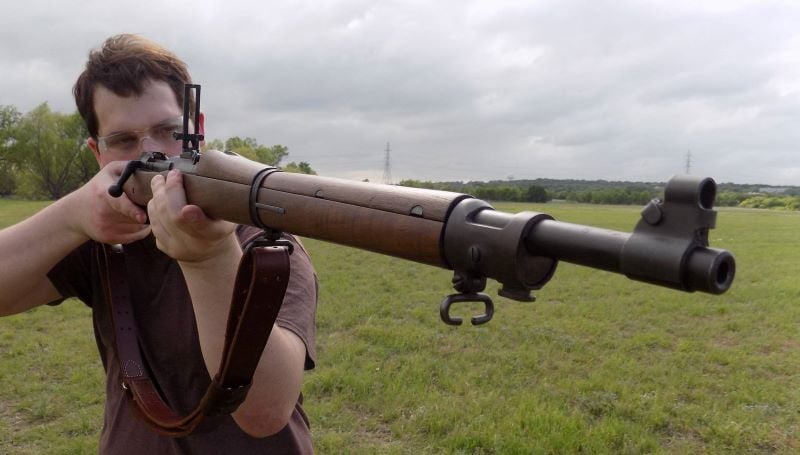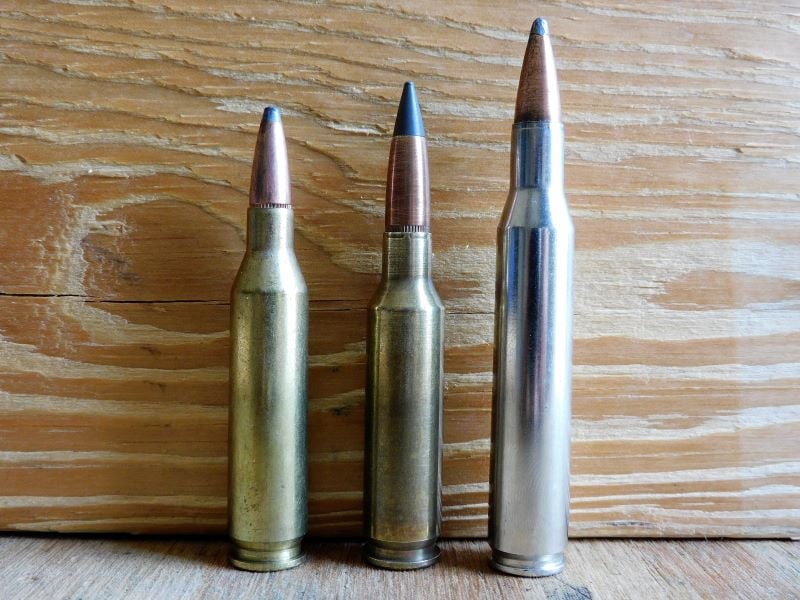The beauty of the bolt action rifle is the ability to shoot cartridges as light or as heavy as you like. From .22 Long Rifle to .50 BMG and many in between and beyond, there is a bolt gun that chambers them. But bolt guns require some scale to bring the rifle up and down to the size of the cartridge to be fired. In short, action size.
Bolt actions come in many sizes and they are broadly classed as short action and long action rifles. But what rifle constitutes a short action? What constitutes a long action? Which calibers fall into each category and is there any material difference between shooting a short action or long action bolt gun? Here is the rundown on short and long action rifles and how they differ.

The Long Action
Bolt action rifles solved some of the concerns of Western military planners, leading to the rapid adoption of the type beginning in the 1870s. The bolt action could take advantage of then-new metallic cartridges and be rapidly loaded and unloaded from all firing positions. Although rifles like the Mauser 1871 and the Gras rifles were developed as single-shots, these were readily converted to magazine-fed repeaters. These early rifles had enough locking strength in the turn bolt to handle more powerful rounds than existing lever action rifles, while still holding more than the old single-shots. Rounds like the German 11mm Mauser and the Italian 10.4mm Vetterli were physically longer rounds that held more powder and had a much longer range than shorter rounds that readily worked in other repeaters.
Stepping forward 30 years, the bolt action repeater has made the jump to smokeless powder and pointed spitzer bullets. While the caliber of the bullets shrunk from 10-11mm down to 7-8mm, the overall size of the cartridge was still lengthy. Rounds like the 8x57mm Mauser, 7.62x54R, and .30-06 represent typical battle rifle cartridges of the early 20th century. These rounds boasted a large case capacity for more powder and greater potential downrange. With some exceptions, most military rifles of the day would be considered long action. Indeed, any modern rifles in these cartridges are long action as well. But a rifle chambered for the large .50 BMG round would make a comparable .30-06 seem short. But these actions are only long actions because later short actions are so short.
The Short Action
Although military and big game rifles tend to be classed as long action, entire categories of rifles don’t fit the bill. .22 rimfire bolt action rifles or rifles chambered in short varmint cartridges like .22 Hornet, would not be long actions. These shorter-length cartridges do not require a long magazine and matching bolt to chamber and eject these rounds.
Even amongst early military rifles, some actions were shorter than others. The British Lee Enfield had a relatively short bolt and receiver to match its shorter but still potent .303 British round. Similarly, the Italian 6.5×50 and 7.35×51 rounds were tidy rounds compared to the imminently familiar .30-06.


Later, the .308 was necked down to create other popular cartridges like the .243 Winchester and 7mm-08 Remington rounds, all of which could be chambered in compact framed bolt actions. Far and away the most popular of these is the Remington 700. It was introduced in 1962 and has a short action designed rifle round with an overall length of 2.75 inches. There is a laundry list of short action rifles including the many iterations and copies of the Remington 700, Browning X-Bolt, Savage Model 10, and Kimber Hunter.

There are other rifles on the market with even shorter actions, such as .22 rimfire rifles and rounds built specifically around cartridges like the .223 Remington and 7.62×39. But when the term short action is invoked, we generally think of .308 and its offspring. But these rounds are not the only ones. Other rounds based on different, though similarly short, cases occupy the short action niche. These rounds include the .257 Roberts, .260 Remington, and 6.5 Creedmoor, among others.
Pros and Cons of Long Action vs. Short Action
Power
Conventional wisdom dictates that the larger the case capacity, the more powder and heavier bullet combinations possible. This generalization usually holds and long action rifle rounds generally have more power potential and superior downrange performance. This is unquestionable with some large rounds like .50 BMG and .416 Rigby outperforming short action rounds.
But with rounds that most of us are going to use, the gap between long action and short action rounds can be surprisingly small. Handloading allows you to unlock the true potential of long action cartridges as factory ammunition tends to be loaded conservatively. In theory, the .30-06 can outperform the larger .300 Win. Magnum if we compare handloaded ammunition for the former and some sedate factory loads for the latter. But with off-the-shelf ammunition, it can be a harder press. Standard 147 grain .308 Winchester ammunition is a virtual facsimile of the military 150 grain .30-06 M2 ball load. On the whole, long action cartridges are more powerful but the difference can vary from wide to inconsequential.
Cycling and Handling
Cycling and handling a bolt action rifle comes down to much subjective experience. After years of shooting .270 Winchester and 7mm Remington Magnum rifles, I was surprised at how much more quickly I could cycle and handle a .308 Winchester Remington 700.
Exactly how long your bolt throw will be depends on the cartridge of your choice, but long action cartridges require a longer bolt, longer receiver, and a longer magazine. The rearward and forward motions of working the bolt are more pronounced. If you are in the habit of holding the rifle to the shoulder, the back of the bolt can come uncomfortably close to your face as you cycle the action. Short action rifles with their correspondingly shorter bolt and magazine will generally be easier and faster to cycle.
The Savage 11 short action chambered in .308 has an empty weight of six pounds. The identical long action model, the 111 in .30-06, is a half-pound heavier. The extra steel needed for a long action adds extra weight, which can be either an asset or liability.
Most manufacturers have two separate product lines for long action and short action rifles. The Savage 10 and 11 designate short action rifles of Savage Arms while their long actions are denoted by the digits: 110, 111, ect. But some manufacturers, most notably Tikka, produce only long action rifles to use both short action and long action cartridges. It is worth noting that long action rifles chambered in shorter rounds like the .308 can more readily accept heavier and longer bullet profiles for long range work.
Cost
If we tallied up all short action and long action cartridges and their respective rifles, we would find that the long action is the most expensive. But there is some weight at both ends of the spectrum. Cartridges whose name ends with Magnum, like .300 Winchester Magnum, .338 Winchester Magnum, etc. tend to be more expensive to buy and shoot. The demand for these cartridges and rifles to shoot them are moderate compared to other cartridges. Their expense is compounded by the sheer demand for rounds like the .308 Winchester and 7.62 NATO. Law enforcement and military contract ammunition is cheap and there is a greater demand for the rifles. Through economies of scale, your typical .308 ammo and rifle is going to be less expensive to manufacture and purchase.

Practically, long action rifles and ammunition are going to be a little more expensive, but you might find the difference to not be worth talking about, particularly when venturing beyond the most common ammunition. Rounds like .270 Winchester and .30-06 are very popular hunting cartridges. While these rounds cannot compare to the cheap .308, there is still more demand for them than other short action rounds.
The Bottom Line
When it comes to short action and long action rifles, there is no best option. There is only what is best for you. Short action rifles and their cartridges make for a dandy, quick shooting combination. Long action rifles can push the power envelope but can be more expensive to buy and feed. There are even long actions chambered in short action cartridges. In the end, there is no magic formula but now you know some of the merits and demerits of long and short action rifles to consider for your next deer or precision rifle.

